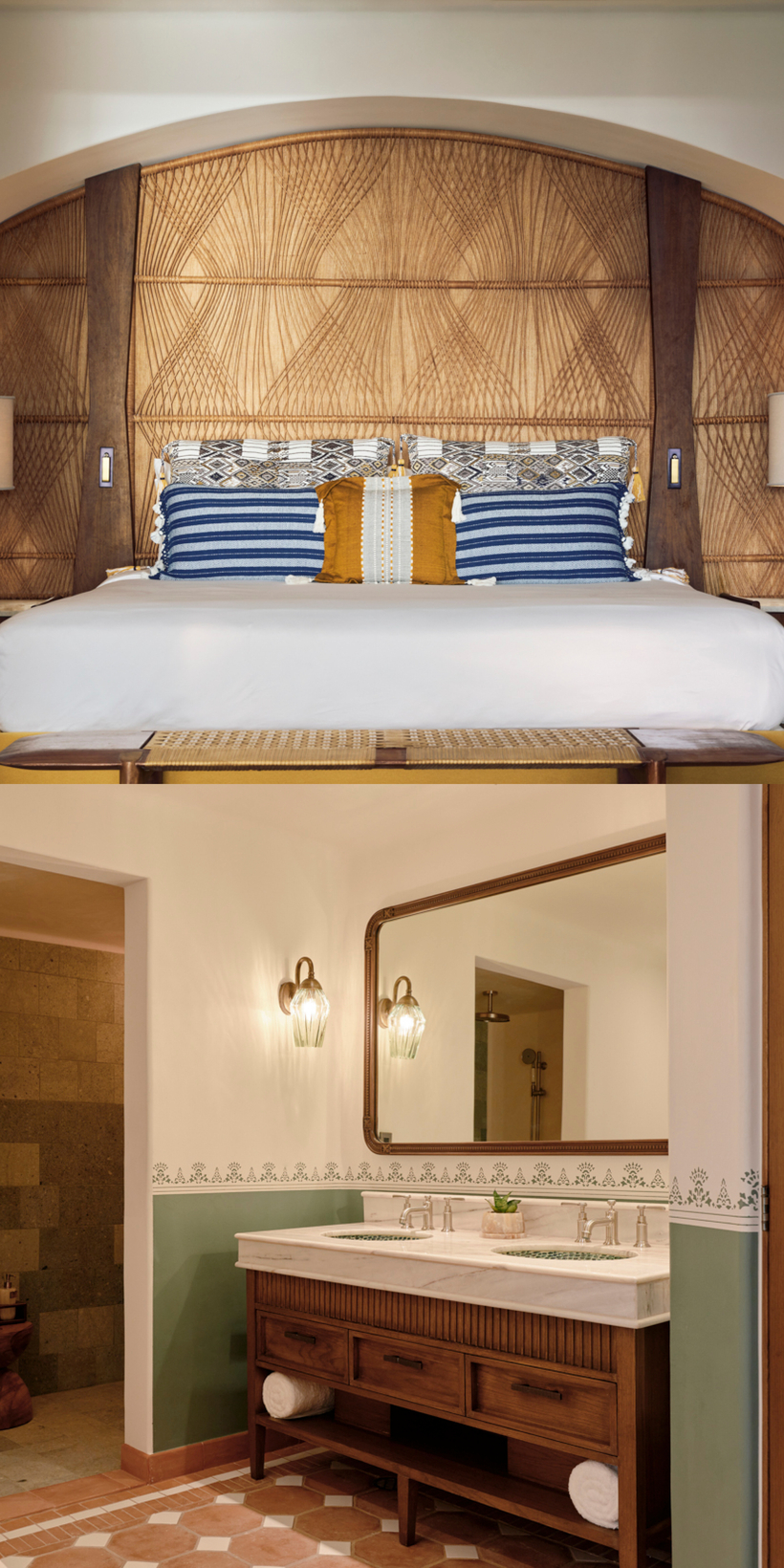It was suffocatingly hot and the kind of inky, velvety dark that is almost tangible. Wearing only a towel, I sat in a small, igloo-shaped hut as the steam swirled upward and a bare-chested shaman shouted at me in the name of Temazcal, a ritual form of Mayan cleansing.

That was five years ago. While I can’t quite say that my life was transformed as a result of my stay at Belmond Maroma, a hotel and spa on Mexico’s Riviera Maya, it was enough to bring me back this summer.
The timing was no accident; Maroma has recently experienced a rebirth of its own. The three-year, $74 million project is Belmond’s first full-scale North American renovation since LVMH acquired the group, in 2019.

Framed by deep jungle on one side and Caribbean coast on the other, the hotel has always had that special something. It was originally developed in the 70s by Mexico City–based architect and restaurateur Jose Luis Moreno, who saw the lot while flying over the area and decided to create his home there. After a hurricane destroyed it in 1988, he rebuilt it as a hotel and, in 2001, sold it to the group that is currently known as Belmond.
Today, Maroma has 72 guest rooms housed in white stucco buildings that are situated in alignment with sacred Mayan geometry. Vibrant Mexican tiles add injections of color; a shining red corazón pierced with a dripping arrow against a lime-green background is found in the restaurant area.

Federico Echaiz, Maroma’s longtime general manager, said that his main goal for the renovation was to “underline the soul of Mexico.” On that note, interior architect and designer Tara Bernerd, using materials and decorative elements from local artisans, set out to capture the feeling of a laid-back beach house.
“Every stone, every tile, every cushion laid onto every carved wooden sofa has come from Mexico,” says Bernerd. Decorating the bedroom floors required 700,000 hand-painted terra-cotta tiles from José Noé Suro’s Cerámica Suro, a studio in Guadalajara. Even the imposing chandelier in Woodend by Curtis Stone, Maroma’s fine-dining restaurant, is shimmering with shells and jade stones found in the region.

This is no place to go hungry or toy with intermittent fasting. From the breakfast quesadillas to the perfectly tart lime soup served at the beachside restaurant Casa Mayor, the food is high quality and extremely reliable. The same goes for the drinks, especially when mixologist Ximena Rubi organizes an agave tasting, where she pairs deliciously smoky mezcals with fried black ants and pink worms.
In fact, insects are a bit of a theme. Their queen, at least here at Maroma, is the stingless, endangered Melipona bee, one of the primary pollinators of the Yucatán Peninsula. Although much of the bee’s native habitat has been destroyed by development, tens of thousands will find sanctuary at a structure that has been built to house them in a remote area of the property.

Honey will be the star attraction of Latin America’s first Guerlain Spa, which will open at Maroma in November. Its menu will include Mayan wellness rituals such as sound healing as well as an array of honey-laced treatments. Even Temazcal will make an imminent return, and when it does, Maroma’s many devotees will be signing up to sweat and surrender.
Going places? Whether traveling abroad or exploring culture closer to home, MAIR MAIL’s Arts Intel Report is our newly-revamped research tool for what to do and where and when to do it
Mary Lussiana is a Lisbon-based travel writer and reviewer of hotels

